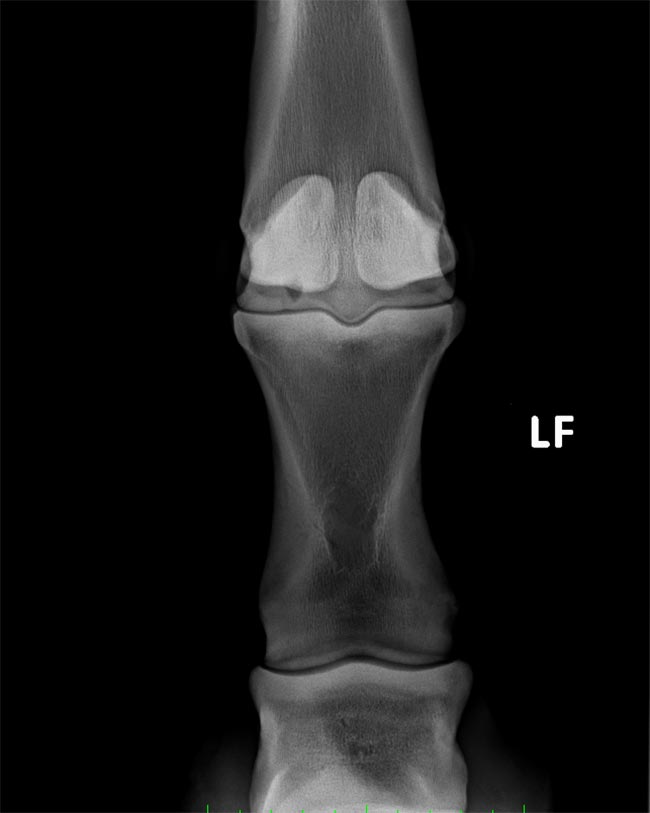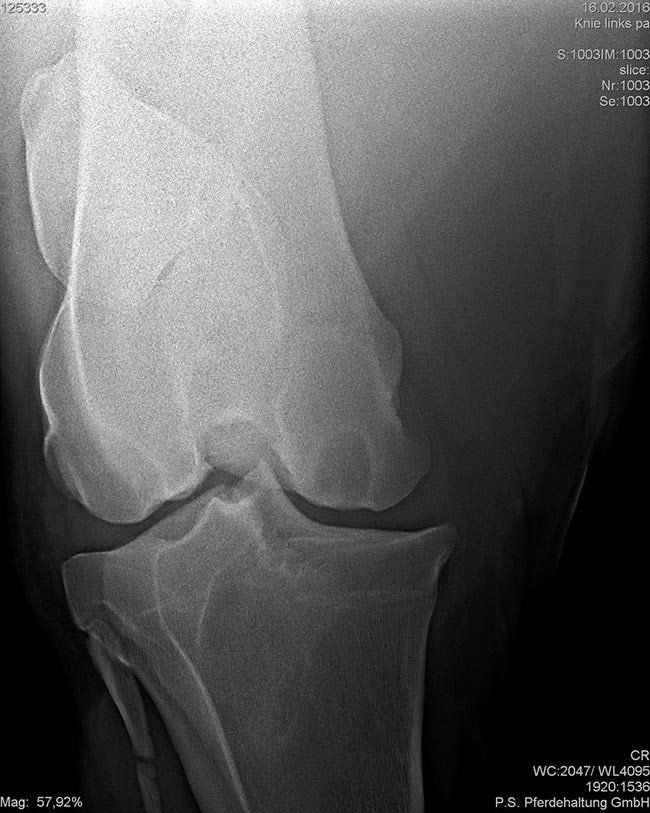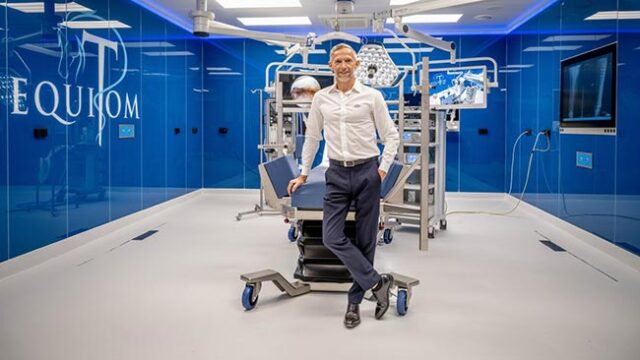By Dimitri Kadic MVM, DACVS/DECVS
Photography: © Courtesy Equitom
Nearly one in three Warmblood horses is affected by OCD in one or more joints. We can therefore conclude that it is a common condition, sometimes with far-reaching consequences.
OCD, or osteochondrosis dissecan,s is one of the most common joint disorders in horses. It is a developmental disorder of the (cartilaginous) bone that can occur in any joint, leading to the formation of intra-articular fragments (image 1), flattening of the subchondral bone, or a bone cyst (images 2a and 2b). Treatment of OCD is relatively straightforward and, when addressed at a young age, further damage to the cartilage can usually be prevented, resulting in an excellent prognosis for the horse’s athletic career.

Multiple osteochondral fragments (OCD) at the level of the lateral trochlear ridge of the femur (stifle)


Etiology
Nearly one in three young horses is affected by OCD in one or more joints. The condition occurs in all breeds but is significantly less frequent in ponies and cold-blooded horses than in Warmbloods. Both genetic (hereditary) factors and environmental influences play a role in the development of OC(D).
Genetic (hereditary) factors
Large, fast-growing horses are more prone to OCD. In addition, various other genes influence the onset of OCD. For example, the vascularization (blood supply) of juvenile cartilage and subchondral bone—which are critical in the development of OCD—is strongly genetically determined. Juvenile cartilage refers to the cartilage of a young horse, while subchondral bone serves as the support structure for the cartilage. This type of bone has a certain degree of resilience and elasticity. Due to its deformability, it can absorb and neutralize some of the forces exerted on the joint.
Environmental factors
1. Nutrition
Feeding a foal, and even a mare during pregnancy, with too much energy-rich feed (grains) greatly increases the risk of OCD in the foal. Foals that grow too quickly or are too heavy for their frame are subject to excessive forces on their juvenile skeleton, which promotes the formation of OCD... To read the complete article you need to be a subscriber
CLICK HERE TO SUBSCRIBE TO BREEDING NEWS
SUBSCRIBERS CAN READ THE COMPLETE ARTICLE BY LOGGING IN AND RETURNING TO THIS PAGE




